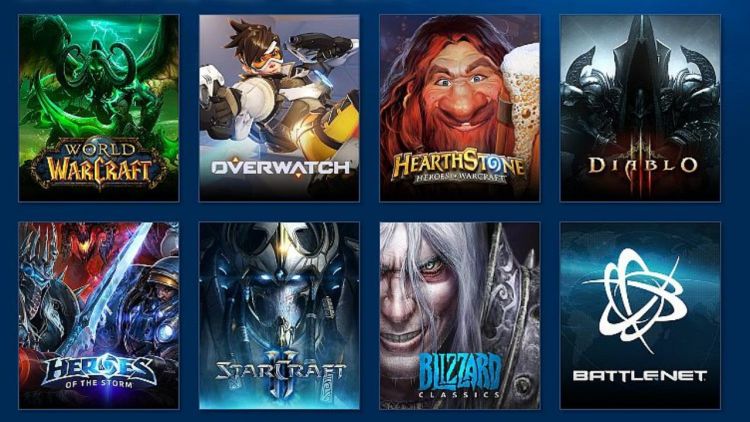Activision Blizzard just finished their fourth-quarter financial results conference call, announcing better than expected results for Q4 and the full year of 2020. Major topics include the tremendous success of the Call of Duty model, Shadowlands launch, and multiple mobile titles for Blizzard franchises in advanced development.
Blizzard Entertainment highlights include Diablo Immortal scheduled to launch later this year, as well as several hints regarding remasters (Diablo 2: Resurrected) and multiple mobile experiences aimed at expanding the Warcraft universe already in advanced development, calling mobile a top priority to give fans new ways to engage and experience its franchises. Naturally, most of the specifics are being saved for the upcoming BlizzConline, though Diablo Immortal playtesting was extremely well received, while Overwatch 2 and Diablo 4 are not expected until at least 2022.
In his opening speech, CEO Bobby Kotick praised the Call of Duty Endowment, which achieved its most successful year ever in placing over 15,000 veterans into high-quality jobs in 2020. Since its inception in 2009, the endowment has funded the placement of 81,000 veterans into new jobs. He also brought up their $4 million pledge to the United Negro College Fund, the Equal Justice Initiative, and Management Leadership for Tomorrow, although the company still received derision after resisting a shareholder proposal to institute a Rooney Rule last month.
Much of the Q&A session followed the success of the three main franchises – Call of Duty, Candy Crush, and World of Warcraft, again citing Call of Duty’s engagement methods as a model to apply to other games. Warzone is cited as an important piece of the COD franchise, with great results on the conversion from F2P to premium, and will continue to be a central part of content planning to allow the entire community to experience the latest the franchise has to offer. Player expectations are very high, and they want to make sure they over deliver on that front moving forward.
The pandemic was also discussed, questioning whether reduced restrictions will result in a decline for the entertainment industry, though Activision Blizzard has strong convictions that their current momentum is sustainable, due to the deep pipeline of upcoming content, which should exceed player expectations. While many titles saw increased engagement at the start of the pandemic, social engagement has remained at an elevated level despite the lifting of restrictions in various parts of the world, with CoD and WoW engagement substantially higher than it was at the start. All three major franchises have major potential for growth, between a full year of Warzone for CoD and increased mobile opportunity in China, Shadowlands launch momentum and great engagement in Classic, and Crash Bandicoot On the Run releasing this March. There were also hints at a few other things up their sleeve, specifically remastered content which will be unveiled later this year (almost certainly Diablo 2: Resurrected).
Activision Blizzard is also committed to continuing to expand development teams in the key three franchises – Call of Duty, World of Warcraft, and Candy Crush. Mobile is a top priority as they continue to focus resources and investment in the largest franchises in order to bring more content more frequently to the communities that most expect it. Warcraft franchises alone have hundreds of millions of players worldwide who have played interacted with Warcraft in different ways, and the franchises have a lot of potential far beyond where it is today (again hinting at mobile projects in development).
CEO Bobby Kotick stated the following about mobile game development and expanding the World of Warcraft community: “In our Warcraft franchise, we intend to deliver more frequent premium content to sustain and expand the World of Warcraft community,” he said. “And we’ve made multiple, mobile, free-to-play Warcraft experiences and they’re now in advanced development based on our franchise’s beloved IP. This will create opportunities for both existing players and new fans to experience the Warcraft universe in entirely new ways.”
Finally, the long term content plans for Warcraft and expectations for WoW growth in 2021 were discussed, with it being noted that modern and Classic WoW isn’t 1:1 in terms of what players expect and desire. The two communities engage in different ways, but the unified sub helps both, as players can flip between games as each releases new content. The launch of Shadowlands in a work from home environment is a point of pride for Blizzard, and the expansion has turned out great so far, with content for players of all types to engage with, resulting in the game’s highest engagement in the last 10 years and a much a larger player base than that of a year ago. The Classic community also remains highly engaged, and Blizzard is committed to giving players who love the game a way to re-live their original experience with the game – they want to continue to explore Classic nostalgia, and have more plans to reveal for both Classic and Retail (at BlizzConline). WoW will be a significant growth driver for Blizzard this year.


